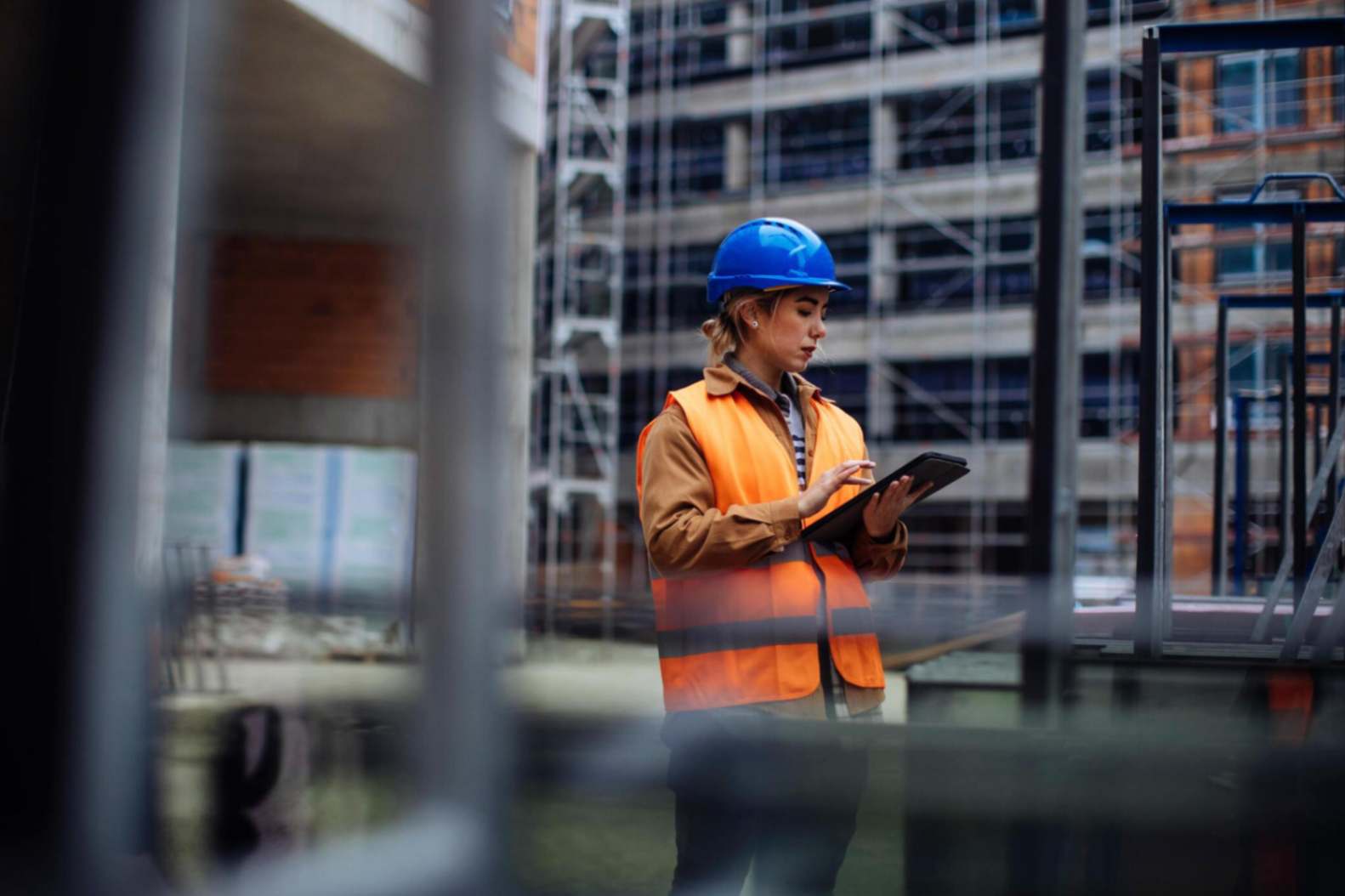
The Changing Landscape of Construction Technology: How Technological Advancements Are Reshaping Job Roles
The construction industry, traditionally known for its hands-on approach, has undergone a transformation in recent years. The emergence of construction technology has revolutionized the way projects are planned, executed and managed.
As we witness this evolution, it becomes clear that technology not only influences the tools used on construction sites but also redefines roles and responsibilities within the workforce. In this article, we will delve into the impact of construction technology on job roles within the industry.
Building Information Modeling (BIM): A Revolutionary Approach to Design and Planning
The introduction of Building Information Modeling (BIM) marks a moment in construction technology. BIM represents a representation of both functional aspects of buildings or infrastructure. This technology allows architects, engineers and construction professionals to collaborate in an environment that enables them to visualize every aspect of the project before any physical work begins.
1. Architects and Designers
BIM has empowered architects to create accurate 3D models of structures, facilitating better communication with clients and stakeholders. Designers can now envision the outcome of their projects, evaluate challenges ahead of time and make well-informed decisions that minimize errors during the construction phase.
2. Engineers
Building Information Modeling (BIM) has revolutionized the way engineers analyze and simulate the integrity of buildings and infrastructure. By providing insights into issues before construction begins, BIM not only enhances design efficiency but also ensures the development of safer and more resilient structures.
Drones: Enhancing Surveying and Inspections
The utilization of unmanned aerial vehicles (UAVs), commonly known as drones, has brought about a transformation in surveying and inspections within the construction industry. Equipped with cameras and sensors, drones offer an aerial perspective that provides real-time data and invaluable insights on construction projects.
- Surveyors: Traditional surveying methods have often been time-consuming and faced challenges. However, with the introduction of drones, surveyors can now efficiently collect data in significantly less time, thereby improving precision and overall survey efficiency.
- Inspectors: Drones have become a tool for conducting inspections on construction sites. With their ability to monitor progress remotely and identify safety hazards in hard-to-reach areas, inspectors can enhance site safety while reducing the risk of accidents.
Augmented Reality (AR) and Virtual Reality (VR): Transforming On-Site Training and Visualization
The advent of augmented reality (AR) and virtual reality (VR) technologies has revolutionized on-site training and visualization in the construction industry. These immersive technologies provide benefits by creating experiences that allow for enhanced learning opportunities.
The construction industry is experiencing a transformation in the way professionals interact with their surroundings, thanks to technologies like on-site training and project visualization.
If you are a driven individual looking for opportunities in the construction industry and have a diversified skill set that includes technical expertise, project management, and a commitment to safety, check out jobsinconstruction.com.
- Construction Workers: For construction workers, augmented reality (AR) and virtual reality (VR) have become tools for training purposes. These technologies allow workers to familiarize themselves with machinery and procedures in an environment. This does not enhance safety. Also accelerates the learning process when acquiring new skills.
- Project Managers: Project managers, on the other hand, can leverage VR to explore construction sites before they are even built. This enables them to identify issues and optimize layouts beforehand. Such visualizations greatly enhance decision-making and coordination among all stakeholders involved in a project.
Robotics and Automation: Redefining Labor Roles
The integration of robotics and automation in construction has led to a reevaluation of labor roles on construction sites. While these technologies do not replace human workers, they augment their capabilities, allowing them to focus on more complex tasks.
- Construction Workers: Automated machinery and robotic systems handle repetitive and labor-intensive tasks, reducing the physical strain on construction workers. This shift allows human workers to concentrate on tasks that require critical thinking, creativity, and problem-solving.
- Maintenance Technicians: With the rise of robotic systems in construction, there is an increased demand for skilled technicians who can maintain and troubleshoot these complex machines. This represents a new niche in the job market within the construction industry.
Internet of Things (IoT): Enhancing Equipment Monitoring and Safety
The Internet of Things (IoT) has revolutionized the construction industry by connecting equipment and machinery, resulting in “construction sites where real-time data is collected and analyzed. This connectivity has implications for job roles within the construction sector.
- Equipment Operators: With enabled sensors on construction equipment, operators now have access to real time data on performance, fuel consumption and maintenance requirements. This allows them to monitor and optimize machinery efficiency, reducing downtime and improving productivity levels.
- Safety Managers: IoT devices play a role in creating a working environment by monitoring and analyzing data related to worker movements and environmental conditions. Safety managers can use this information proactively to identify hazards and implement measures effectively, thereby minimizing the risk of accidents.
Artificial Intelligence (AI): Streamlining Decision-Making Processes
Artificial intelligence (AI) is making strides in the construction industry by streamlining decision-making processes and optimizing project management practices. AI algorithms analyze datasets to provide insights that enable construction professionals to make well-informed decisions quickly.
- Project Managers: AI-driven project management tools offer assistance in streamlining scheduling, resource allocation and budgeting processes. These tools help project managers enhance efficiency while ensuring the utilization of resources.
- Cost Estimators: AI algorithms are increasingly utilized to estimate costs by leveraging data and project-specific variables. This does not improve budget accuracy. Also minimizes the financial risks associated with construction projects.
Sustainability Integration: Green Technologies and Eco-Friendly Practices
Construction technology is also playing a pivotal role in advancing sustainability within the industry. The integration of green technologies and eco-friendly practices is shaping job roles and responsibilities and fostering a commitment to environmental stewardship.
- Integration of Sustainability: The construction industry is actively embracing technologies and eco-friendly practices, which are reshaping job roles and responsibilities while fostering a commitment to stewardship.
- Environmental Engineers: The growing emphasis on construction practices has led to an increased demand for engineers. These professionals focus on incorporating eco-materials, energy sources and waste reduction strategies into construction projects, ensuring compliance with environmental regulations and certifications.
- Energy Efficiency Specialists: With energy efficiency taking center stage in the construction industry, specialists in this field play a role. They. Implement technologies that reduce energy consumption in buildings, ensuring adherence to sustainability standards while contributing to the future of the construction sector.
Conclusion
The progress of construction technology goes beyond the introduction of tools; it represents a complete transformation that affects the very essence of the construction industry—the individuals who construct our world.
As technology keeps advancing, professionals in construction must adjust to work methods, embrace learning and make the most of these technological advancements for their own benefit.
The future of construction will be shaped by those who can seamlessly incorporate technology into their skill set, ensuring a collaboration between expertise and the power of innovation on construction sites worldwide.





